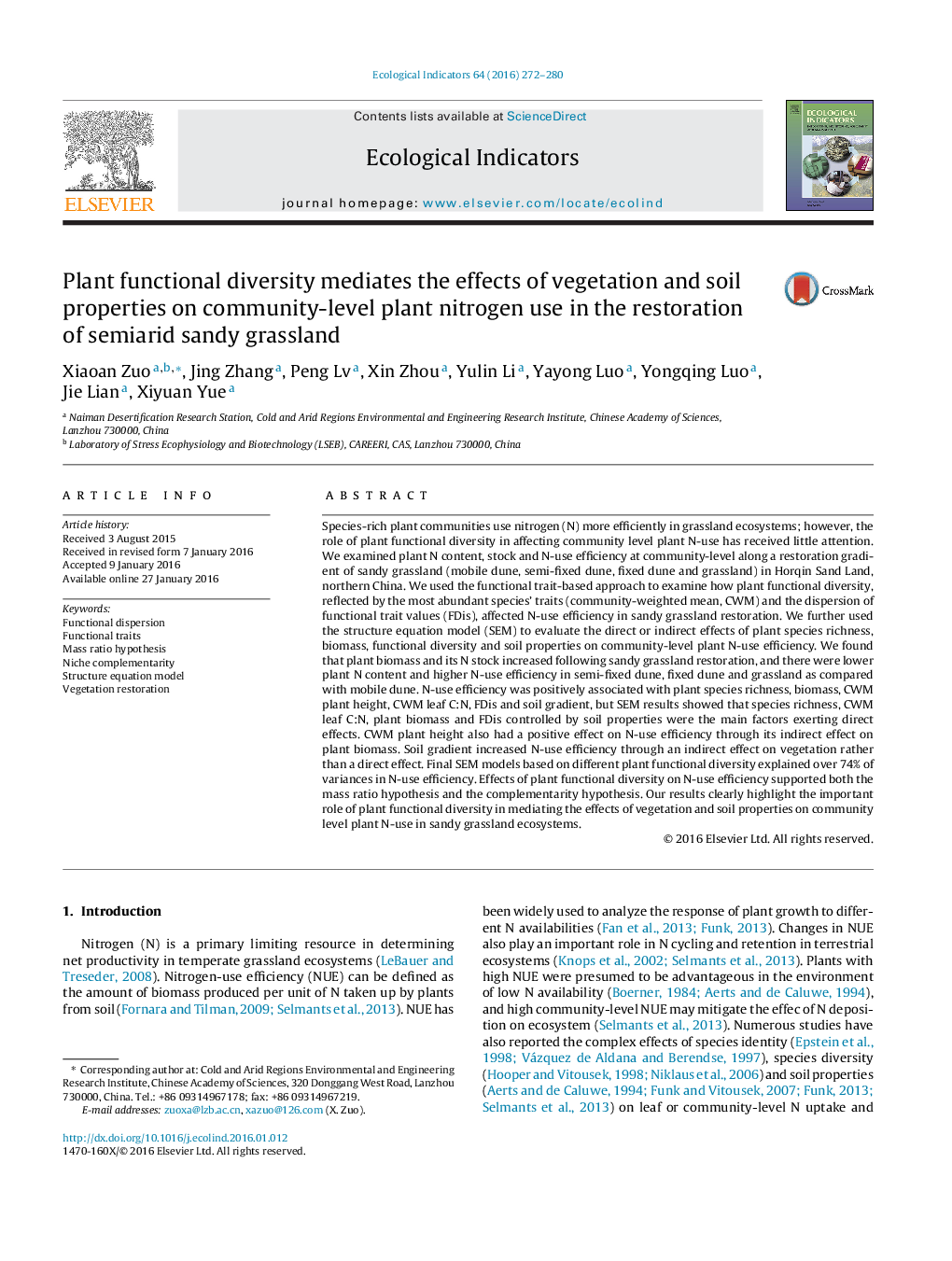| کد مقاله | کد نشریه | سال انتشار | مقاله انگلیسی | نسخه تمام متن |
|---|---|---|---|---|
| 4372958 | 1617138 | 2016 | 9 صفحه PDF | دانلود رایگان |
• Plant N-use efficiency increases with increasing species richness in sandy grassland restoration.
• Plant N-use is associated with traits of the most abundant species and function dispersion.
• Soil properties affect plant N-use via indirect effect on vegetation rather than direct effect.
• Plant functional diversity mediates effects of vegetation and soil properties on plant N-use.
Species-rich plant communities use nitrogen (N) more efficiently in grassland ecosystems; however, the role of plant functional diversity in affecting community level plant N-use has received little attention. We examined plant N content, stock and N-use efficiency at community-level along a restoration gradient of sandy grassland (mobile dune, semi-fixed dune, fixed dune and grassland) in Horqin Sand Land, northern China. We used the functional trait-based approach to examine how plant functional diversity, reflected by the most abundant species’ traits (community-weighted mean, CWM) and the dispersion of functional trait values (FDis), affected N-use efficiency in sandy grassland restoration. We further used the structure equation model (SEM) to evaluate the direct or indirect effects of plant species richness, biomass, functional diversity and soil properties on community-level plant N-use efficiency. We found that plant biomass and its N stock increased following sandy grassland restoration, and there were lower plant N content and higher N-use efficiency in semi-fixed dune, fixed dune and grassland as compared with mobile dune. N-use efficiency was positively associated with plant species richness, biomass, CWM plant height, CWM leaf C:N, FDis and soil gradient, but SEM results showed that species richness, CWM leaf C:N, plant biomass and FDis controlled by soil properties were the main factors exerting direct effects. CWM plant height also had a positive effect on N-use efficiency through its indirect effect on plant biomass. Soil gradient increased N-use efficiency through an indirect effect on vegetation rather than a direct effect. Final SEM models based on different plant functional diversity explained over 74% of variances in N-use efficiency. Effects of plant functional diversity on N-use efficiency supported both the mass ratio hypothesis and the complementarity hypothesis. Our results clearly highlight the important role of plant functional diversity in mediating the effects of vegetation and soil properties on community level plant N-use in sandy grassland ecosystems.
Journal: Ecological Indicators - Volume 64, May 2016, Pages 272–280
